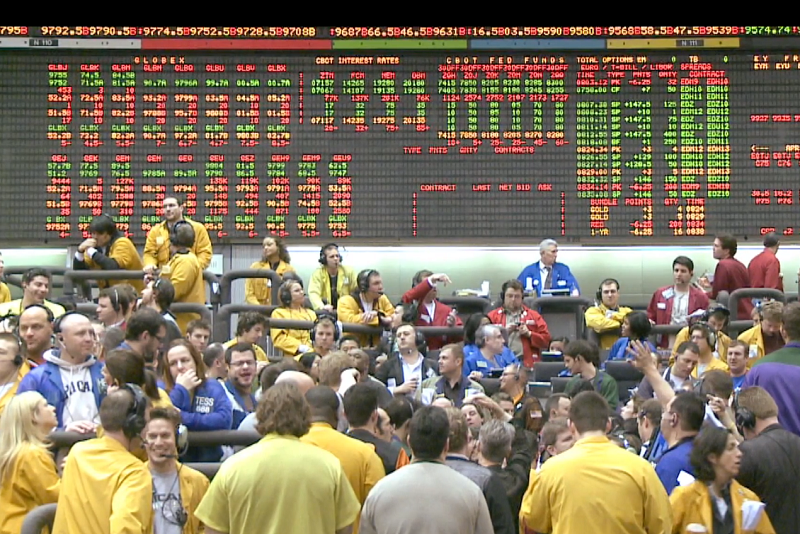BROWSE BY TOPIC
- Bad Brokers
- Compliance Concepts
- Investor Protection
- Investments - Unsuitable
- Investments - Strategies
- Investments - Private
- Features/Scandals
- Companies
- Technology/Internet
- Rules & Regulations
- Crimes
- Investments
- Bad Advisors
- Boiler Rooms
- Hirings/Transitions
- Terminations/Cost Cutting
- Regulators
- Wall Street News
- General News
- Donald Trump & Co.
- Lawsuits/Arbitrations
- Regulatory Sanctions
- Big Banks
- People
TRENDING TAGS
Stories of Interest
- Sarah ten Siethoff is New Associate Director of SEC Investment Management Rulemaking Office
- Catherine Keating Appointed CEO of BNY Mellon Wealth Management
- Credit Suisse to Pay $47Mn to Resolve DOJ Asia Probe
- SEC Chair Clayton Goes 'Hat in Hand' Before Congress on 2019 Budget Request
- SEC's Opening Remarks to the Elder Justice Coordinating Council
- Massachusetts Jury Convicts CA Attorney of Securities Fraud
- Deutsche Bank Says 3 Senior Investment Bankers to Leave Firm
- World’s Biggest Hedge Fund Reportedly ‘Bearish On Financial Assets’
- SEC Fines Constant Contact, Popular Email Marketer, for Overstating Subscriber Numbers
- SocGen Agrees to Pay $1.3 Billion to End Libya, Libor Probes
- Cryptocurrency Exchange Bitfinex Briefly Halts Trading After Cyber Attack
- SEC Names Valerie Szczepanik Senior Advisor for Digital Assets and Innovation
- SEC Modernizes Delivery of Fund Reports, Seeks Public Feedback on Improving Fund Disclosure
- NYSE Says SEC Plan to Limit Exchange Rebates Would Hurt Investors
- Deutsche Bank faces another challenge with Fed stress test
- Former JPMorgan Broker Files racial discrimination suit against company
- $3.3Mn Winning Bid for Lunch with Warren Buffett
- Julie Erhardt is SEC's New Acting Chief Risk Officer
- Chyhe Becker is SEC's New Acting Chief Economist, Acting Director of Economic and Risk Analysis Division
- Getting a Handle on Virtual Currencies - FINRA
ABOUT FINANCIALISH
We seek to provide information, insights and direction that may enable the Financial Community to effectively and efficiently operate in a regulatory risk-free environment by curating content from all over the web.
Stay Informed with the latest fanancialish news.
SUBSCRIBE FOR
NEWSLETTERS & ALERTS
Unraveling the Mystery of Last Week’s Massive E-mini Futures Trade
[Photo: Chicago Mercantile Exchange - Pininterest]
On December 7th at 1:21 p.m., an unknown trader purchased around 16,000 E-mini S&P 500 futures contracts valued at A $1.8 billion - the biggest transaction of its kind all year - and comparable in size to the “fat finger” trade said to have set off the May 2010 “flash crash.” The purchase was more than double the size of a big E-mini trade that took place on 1/15/16, in which someone sold about 7,000 contracts, or around $645 million.
The trade occurred after muted morning gains by the stock market, which then soared in the afternoon after the transaction, with the S&P 500 closing at a fresh record of 2,241.35 on Wednesday and then extending gains into Thursday and Friday.
Traders use e-mini contracts to bet on or hedge against future moves in the S&P 500 stock-market index, and large moves in the price of E-minis can have knock-on effects in the stock market.
Wednesday’s order sparked a frenzy of superfast trading as other market participants piled in and a total of $3.4 billion worth of E-minis changed hands within 2 seconds, including the original transaction. It’s unclear who stood behind the trade, and CME Group said it couldn’t comment on “the specifics of any particular order.”
It’s believed that a computer program unleashed the buying, perhaps on behalf of a bank that needed to automatically hedge a trade in stock-market derivatives, per Joshua Lukeman, an MD with Credit Suisse.
“It felt like the beginning part was electronic because it went through the pipe so quickly,” Mr. Lukeman said. Then there was a “snowball effect of other folks rushing in,” he added.
Heavy bursts of volume in E-minis aren’t unusual, but they tend to take place when the stock market closes, at 4 p.m. ET, not in the middle of the day.





